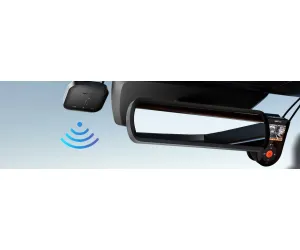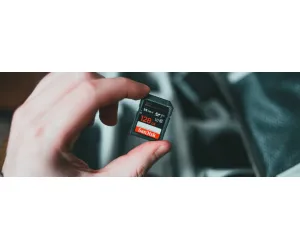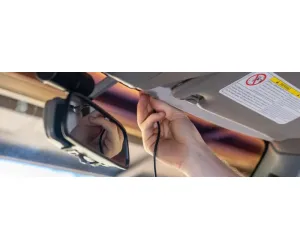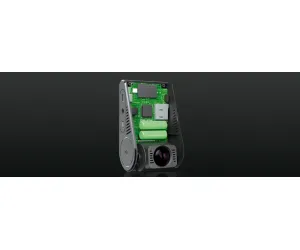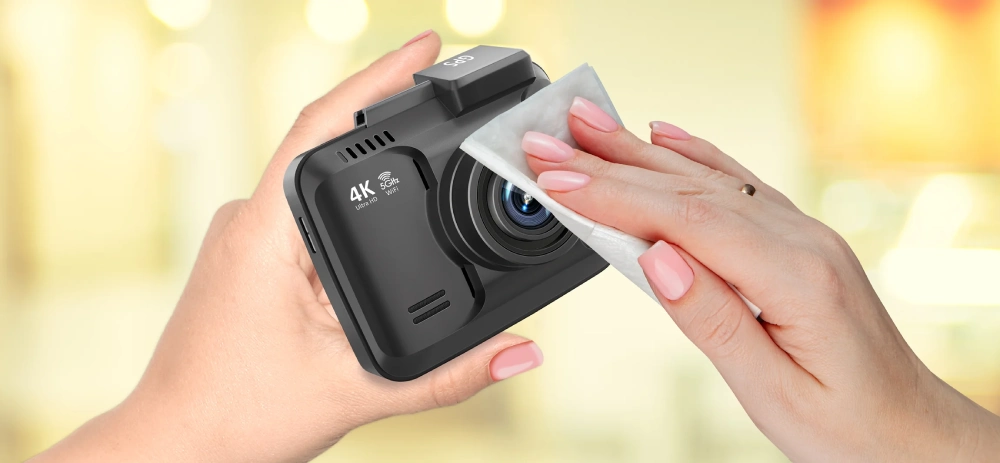
Your dash cam is more than just a gadget—it's your silent witness on the road, providing valuable footage for safety, insurance claims, and peace of mind. But like any electronic device, your dash cam requires regular care to maintain peak performance and long-term reliability.
In this guide, you'll learn 10 expert-recommended tips to maximize your dash cam's lifespan, improve performance, and avoid common issues.
1. Choose a Reliable, High-Quality Dash Cam
Not all dash cams are built the same. Invest in a dash cam from a reputable brand that offers:
- 4K or Full HD video quality
- Night vision and HDR support
- Heat-resistant components
- Positive customer reviews and warranty support
✅ Popular long-lasting models include the Viofo A229 PRO and A329 series.
2. Ensure Proper Installation
Improper installation can lead to shaky footage, poor angles, and power issues. Follow these tips:
- Mount the dash cam securely behind the rearview mirror
- Route the power cable neatly using clips or adhesive mounts
- Use a hardwire kit or high-quality car charger
Search: “How to install a dash cam correctly” for video guides.
3. Clean the Lens and Housing Regularly
Dirt, dust, and smudges can reduce video clarity—especially at night or in bright sunlight. Make it a habit to:
- Wipe the lens with a microfiber cloth weekly
- Remove dust from vents to prevent overheating
Bonus Tip: Use a CPL filter to reduce glare and improve image contrast.
4. Protect Your Dash Cam from Extreme Heat or Cold
High temperatures can damage batteries and electronics, especially in Saudi Arabia’s hot climate.
- Use a heat-resistant dash cam model
- Park in shaded areas or use a sunshade
- Remove the dash cam if parked for long hours under the sun
❄️ In cold climates, allow your vehicle to warm up before operating the camera.
5. Use a High-Endurance microSD Card
Standard memory cards wear out quickly with constant recording. Instead, use:
- High-endurance microSD cards (Class 10 or U3)
- Capacities between 64GB–256GB for loop recording
- Cards from trusted brands like SanDisk, Samsung, or Kingston
⚠️ Avoid cheap, unbranded SD cards—they often fail within months.
6. Keep Your Firmware Up to Date
Manufacturers release firmware updates to improve stability, add new features, and fix bugs.
- Visit the official website of your dash cam brand regularly
- Download and install the latest firmware as instructed
Viofo, for example, frequently updates to improve GPS sync, Wi-Fi, and recording stability.
7. Use Parking Mode Smartly
Parking mode offers 24/7 surveillance—but it can drain your car’s battery if not set up properly.
- Use motion detection or time-lapse mode to minimize energy use
- Install a hardwire kit with low-voltage protection
- For best results, pair with an external dash cam battery pack
Tip: Monitor your car battery health to avoid issues.
8. Store the Dash Cam Safely When Not in Use
When you're not driving for several days, remove the dash cam to avoid:
- Heat damage
- Battery swelling
- Theft or vandalism
Store it in a cool, dry place with the lens covered.
9. Calibrate and Check Camera Angle Regularly
Slight shifts can misalign your dash cam, leaving blind spots or cutting off footage.
- Review saved footage monthly
- Re-adjust the angle to clearly capture the road and surroundings
Make sure the horizon is level and both lanes are visible.
10. Format Your Memory Card Monthly
Even high-endurance memory cards require maintenance. Regular formatting:
- Prevents data corruption
- Ensures smooth loop recording
- Removes corrupted or incomplete files
Format via the dash cam’s settings or a computer (FAT32 format recommended).
✨ Bonus Tips to Maximize Dash Cam Lifespan
- ✅ Avoid using your phone charger—use the manufacturer’s charger
- ✅ Keep your dash cam firmware, app, and GPS data updated
- ✅ Consider installing a rear and cabin camera for all-angle protection
- ✅ Replace old SD cards every 12–18 months
❓ Frequently Asked Questions (FAQs)
Q: How long do dash cams typically last?
A: A high-quality dash cam can last 3 to 5 years or more, especially when maintained properly. Key factors include brand quality, heat resistance, and SD card usage.
Q: What is the best SD card for dash cams?
A: Choose a high-endurance U3 microSD card from reliable brands like SanDisk, Samsung, or Kingston. These are built to handle constant loop recording without failure.
Q: Should I unplug my dash cam when the car is off?
A: If your dash cam doesn’t have a hardwire kit with battery protection, it’s best to unplug it to prevent draining your car’s battery.
Q: Why does my dash cam keep restarting or freezing?
A: This could be due to:
- A failing or incompatible SD card
- Overheating due to weather
- Outdated firmware
- Power supply issues (loose cable or low-quality charger)
Update firmware, replace the SD card, and check power connections to fix the issue.
Q: How do I prevent my dash cam from overheating in hot climates?
A:
- Use heat-resistant models (many Viofo cams are designed for this)
- Park in shaded areas or use sunshades
- Remove the cam when parked for long hours
- Avoid leaving the dash cam in direct sunlight behind tinted glass
Q: Is it necessary to format the SD card regularly?
A: Yes! Format your SD card once a month to reduce the risk of corrupted files, recording errors, or device lag. Always back up important footage before formatting.
Q: Can I use any phone charger to power my dash cam?
A: No. Using an incompatible charger can cause unstable voltage and damage the dash cam. Always use the original charger or a high-quality hardwire kit.
Q: What does parking mode do, and is it safe to use?
A: Parking mode allows the dash cam to record incidents while the vehicle is off. It’s safe if paired with a voltage-protection hardwire kit or an external battery pack.
Q: Do dash cams record audio by default?
A: Most dash cams have a built-in microphone that records audio, but you can toggle this feature on/off in the settings if privacy is a concern.
Q: Can extreme cold affect dash cam performance?
A: Yes. In sub-zero temperatures:
- Batteries may drain faster
- Internal components can become sluggish
- Start the engine first before recording
Look for dash cams rated for cold-weather use if you live in colder areas.
Looking for a Reliable Dash Cam in Saudi Arabia?
Explore our top-rated dash cams — featuring advanced tech, local support, and fast shipping across KSA.



